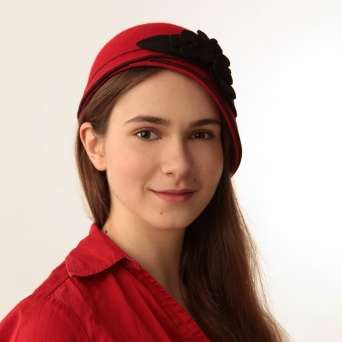The “rediscovery” of Baroque opera in the mid-20th century was a boon to opera lovers. It brought gorgeous works by Handel and Monteverdi (and, to a lesser extent, Rameau, Lully and Cavalli) back to the stages. There are many more composers who were lauded in their time but remain unknown to modern audiences. Theater und Orchester Heidelberg is in the seventh year of its Opera Napoletana project, which produces Baroque obscurities by the likes of Scarlatti, Jommelli, Zingarelli and Porpora. This year’s offering is Nicola Porpora’s 1736 Mitridate (not to be confused with Porpora’s 1730 Mitridate or Mozart’s 1770 Mitridate, both to different libretti).
It tells the story of a king (Mitridate) who defends his kingdom against the Romans while managing romantic rivalries with his two sons (Sifare and Farnace). Farnace loves Ismene, Mitridate’s betrothed. Mitridate is tired of Ismene and would rather marry Semandra – who loves and is loved by Sifare. Mitridate breaks his engagement to Ismene (with the help of a bribed oracle) and woos Semandra. Meanwhile, Farnace plots to kill his father, enlisting Ismene’s help. She reveals the plan. In the chaos that follows, Semandra becomes convinced that Sifare is dead. She’s about to drink poison when Sifare reappears with the dying Mitridate. Mitridate apologizes for his misdeeds and blesses the couple.
If that sounds like nonsense, it is. The libretto (in Italian by Gavardo da Gavardo, after the English by Colley Cibber) is a mess, with characters experiencing psychological discontinuities and reacting to events we never see. Good directing could handle some of the problems by providing the motivation the text lacks. Unfortunately, director Jacopo Spirei chose concept over clarity. The (tired) notion: Mitridate’s realm is a (Muslim) terrorist training camp. We see a mix of turbans, black robes, and modern military gear; a Moorish temple and barbed wire fence; suicide bomber vests and the empty boots of martyrs; and, inexplicably, a human sacrifice as part of the oracle’s prophesy. The resulting production is photogenic but dramatically adrift.
With a bad libretto and disappointing staging, what’s left is Porpora’s music. That’s enough to make this revival worthwhile. Structurally, it’s dense: an endless parade of da capo arias, ariosos and duets, with long chunks of both secco and accompagnato recitative to link it all together. Stylistically, it’s all about the coloratura. Know anyone who thinks Mozart’s Entführung has too many notes? Send them to a Porpora opera, and they will quickly recant. The showpiece arias are endless, punishing strings of runs, trills, and ornaments. Sifare’s pieces, originally written for Farinelli, are firework displays that border on absurdity.
As Sifare, countertenor Ray Chenez attacked his challenging part with muscular energy. His steely sound never faltered as he tossed off terrifying quantities of coloratura. His second- and third-act arias, which featured bizarre, frilly ornaments repeated ad nauseum, followed by spectacular coloratura finishes, were particular triumphs. If he didn’t quite make it look easy – well, I’m sure it wasn’t. In fact, none of the cast seemed entirely comfortable with the score and the stage except for David DQ Lee as Mitridate. Lee’s king was a cool, smirking tyrant, confident in his power. Lee has a light, flexible countertenor that he sometimes lent a metallic edge for expressive effect. He struggled against the heavier orchestration during his Act 1 rage aria, but most of the role seemed written for him.
Soprano Yasmin Özkan, who sang Sifare’s beloved Semandra, was announced as sick. She didn’t sound it: her flute-like voice sparkled. Her ravishing duets with Sifare were musical highlights of the opera, thanks to their buoyant melodies and to the interplay of two such well-matched voices. As the spurned lover Ismene, soprano Katja Stuber sang her poignant lament “Lasciami al mio dolor” with a satin tone that bloomed on long notes. The lone trousered mezzo, Shahar Levi, sang the evil Farnace with rich high notes and a sound that stayed smooth even as her part cut mercilessly through the registers. Bright-voiced baritone Zachary Wilson completed the principal cast as Semandra’s father, Archelao.
Felice Venanzoni led the Philharmonisches Orchester Heidelberg in a stunning musical achievement. Porpora’s score demands virtuosity from instrumentalists as well as singers; the violins must manage extensive ornamentation. Porpora makes use of varied instrumental textures, often calling on the brass, woodwinds and strings within a single piece. Venanzoni maintained a balance between orchestra sections and singers that let the nuances of the unfamiliar score be heard. The playing was consistently lively, never sagging into the dull formalism that Baroque opera can threaten.
Porpora’s 1736 Mitridate doesn’t need a comeback. But it contains arias and ensembles that I’d love to hear in concert and on recordings. Porpora’s music is dazzling. I hope directors are inspired to find his more dramatically compelling operas and stage them. Preferably near me.




